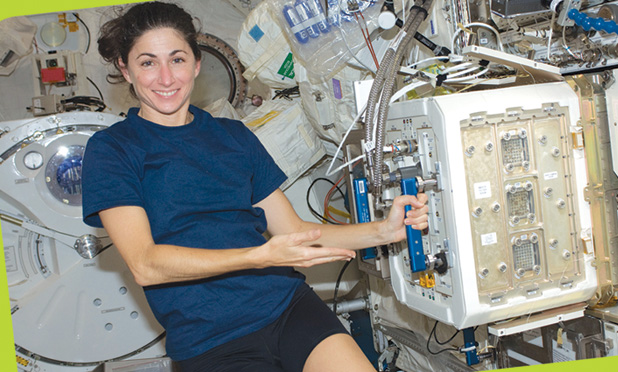Today, exploration into the universe beyond our planet takes many forms and has led to fascinating discoveries in the life and physical sciences, many of which inform our understanding of health and medicine here on Earth. These new voyages of discovery include telescopes that peer deep into space and time, rovers that crawl about on other planets, and, most remarkably, a permanently crewed orbital outpost: the International Space Station (ISS). Like the voyages of discovery long ago, the ISS is a ship with human pioneers looking outward to the next horizon, exploring the physical universe beyond—but also inward, to define the limits of our existence when living in the new frontier of space.
In the free-fall environment onboard the ISS, in low Earth orbit, microgravity affects not only the physical environment (e.g., functional removal of buoyancy-driven convection and sedimentation) but also living organisms, which have evolved within and adapted to a 1-g environment. In addition to its place as one of the four fundamental forces of nature, gravity has played a central part in the evolution of life: it influences biological functions from the level of whole organisms down to intracellular and bimolecular processes.
Space exploration missions quickly revealed that microgravity, or weightlessness, had profound, unique effects on biological phenomena that could not only inform exploration-related research questions but also advance our knowledge of Earth-based processes, including insights into fundamental scientific investigations and into research areas that enable commercial applications (see, for example, “Commercialization of Space Research Catapults ISS Success”). Many of these research questions are difficult or impossible to investigate on Earth, particularly if experiments require observations over more than a brief period of time.
[accordion title=”Commercialization of Space Research Catapults ISS Success”]
In the past, futuristic space science revolutionized the world market as the U.S. Apollo program globally demonstrated how scientific discovery could enable space exploration. The recent discontinuation of the U.S. Space Shuttle Program was poignantly concurrent with an exciting new trend in the nature of space science: a movement for the private sector to engage in and exploit the distinctive resources of the ISS for a broader range of research initiatives.
Accessing the ISS
The idea of a space station was once science fiction, existing only in the imaginations of men until it became clear in the 1940s that the construction of such a structure might be attainable. As the Space Age began in the 1950s, designs of space planes and stations dominated popular media. The first rudimentary station was created in 1969 by the linking of two Russian Soyuz vehicles in space, followed by other stations and developments in space technology until construction began on the ISS in 1998, aided by the first reusable spacecraft ever developed: the American shuttle.
Until recently, U.S. research space onboard the ISS had been reserved for mostly government initiatives, but new opportunities for U.S. commercial and academic use of the ISS are now available, facilitated largely by CASIS—the nongovernment, nonprofit manager of the ISS U.S. National Laboratory. The ISS affords a new paradigm to approach space science and avenues of research enabled by microgravity, and commercialization of ISS scientific endeavors will change the nature of how the world understands and participates in space-based research and development. CASIS promotes this commercialization of space by facilitating increased use of the ISS National Lab by not only academic researchers but also industry scientists and non-NASA government agencies.
The unique environment of the ISS provides a novel platform for attacking scientific discovery and the elucidation of processes. This alternate and powerful opportunity to maximize throughput from R&D to market applications holds the power to advance researchers to the forefront of science and technology innovation. The sheer size of the ISS laboratory space typifies its superior capabilities compared with laboratories on Earth. It is 357-ft long and 60-ft high, and it houses advanced, state-of-the-art technologies to enable cutting-edge multidisciplinary research. Moreover, the vibrant space research community provides a flexible but strong infrastructure for supporting new endeavors. The avenues for scientific advancement using the unique environment of the ISS are abundant, representing an unparalleled opportunity for not only building on existing knowledge but also exploring the unknown, toward revolutionary and innovative advances in R&D. The rich potential for intangible benefits also affords unlimited opportunity for human inspiration and global leadership.
The Need for Commercialization
Commercial entity participation in ISS science achieves the original intent of the ISS, realizing public investment in the research platform. Commercial organizations and academia that focus on tech transfer to the marketplace are key to achieving this goal. Beyond functioning as a platform for revolutionary scientific advancement, researchers using the ISS have opportunities for vital new partnerships and growth in the emerging and dynamic space economies of the nation and the world.
Commercialization is also necessary to keep up with how the world is changing its way of doing business—by opening idea generation to a broader group using techniques such as crowd sourcing and open innovation. A change in mindset is necessary as well as an acknowledgement that it is possible to achieve through partnership more than one can achieve alone. The opening of the ISS to a broader user base embodies the spirit of this mindset. The pharmaceutical industry recognized the power of open innovation in the 1990s, and the space sector has quickly become more open and collaborative in this vein over the past five years.
The New Space Culture
Along with the transition of 50% of U.S. resources to non-NASA management and the strong successes of U.S. commercial companies in developing new spacecraft for cargo shipments to the United States—including research payloads—active involvement by a variety of service providers in space research is a critical element to ISS utilization and the commercialization movement. These service providers participate in developing payloads (spacecraft cargo—in this case, research experiments) for flight. These entities are invaluable to the mission of enabling access to the ISS research platform, especially for first-time users. Ultimately, these companies (along with NASA and CASIS, for U.S. payloads) assist researchers in transitioning their experiments into payloads that are ready for flight— including identifying and executing steps to meet requirements for flight and station use—serving as the lynchpin in efforts to make access to the ISS easy and efficient.
These companies have demonstrated experience in preparing research experiments for flight on the ISS and can help researchers:
- translate their science objectives and ground experiments into feasible research plans for ISS science
- modify or develop hardware and software to meet research needs
- conduct the safety analyses and flight certification testing required for access to the station
- develop crew training materials and procedures for research experiments
- process NASA paperwork.
Fundamentally, these companies guide researchers through the steps of making their ground-based experiments appropriate for a space-based platform, including formal procedures for flight approval. For those new to space, this assistance is priceless—yet many of these companies offer turnkey services and fixed-fee pricing so that researchers can focus on just the science. These services help new users overcome a large hurdle of unfamiliarity that might otherwise discourage them, enabling increased ISS utilization within this commercialization era.
Looking Outward
This new commercial approach to space science promises to create a better future for humankind through the success of the ISS research platform. The world economy may be ailing, and space science has at times been limited by issues of cost or politics, but challenging times call for inspiring discovery. The ISS is one of the most successful international initiatives in history, and the commercialization of space science will build on this legacy of accomplishment by making its capabilities more accessible to the brilliant and pioneering innovators of the future. Welcome to the new face of the ISS: The greatest engineering achievement of all time is now open for business.
A Prime Example of Space Commercialization: The NanoRacks External Platform
Have you ever wondered what it would be like to have a top-notch view of the universe? To see, up close, a performance featuring the power, magic, and destruction of space? Well, the space science company NanoRacks is now offering box seats to this performance— shoe-box seats, that is.
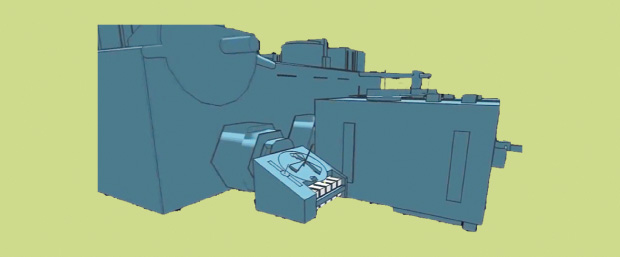
Using a new platform for research in the extreme environment of space (the NanoRacks External Platform), scientists can put experiments inside shoe-box-sized containers that sit on the outside of the ISS. This platform is the first permanent hardware on the outside of the station that allows researchers to take small experiments in and out of the space environment for long-term studies. The CASIS purchased the first two containers that will sit on this platform in late 2012—a pair of premier box seats to the universe.
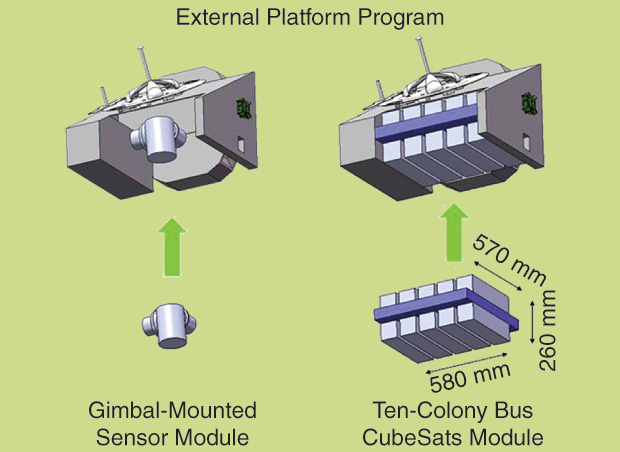
Once in the auditorium of space, the benefit is more than just the view. While the boxes get an impressive view of the Earth and space, the contents of the boxes also feel the conditions of the harsh space environment. These conditions include temperatures that cycle between extreme hot and cold as well as exposure to radiation and atomic oxygen (a damaging form of the oxygen molecule). The CASIS box seats (the first containers to sit on the platform) will give researchers an opportunity to perform materials science research in this environment. The CASIS experiments originated from a formal request for proposals (RFP) in this area, from which the CASIS awarded top proposals with grant funding and access to the new platform.
While the platform has many unique capabilities, materials science research in space is not new; it began in the 1970s. Much of the past materials research is from the Materials ISS Experiment (MISSE), a series of experiments conducted on the station. The materials studied in the MISSE include plastics, ceramics, sensors, solar cells, semiconductors, and devices for optics. The MISSE also included biological experiments, such as investigations of spores, bacteria, and plant seeds. However, the methods of the MISSE (and other research on the outside of the station) usually require complex robotics or astronaut activity outside the station, which are time-consuming and expensive processes. This has made experiments on the outside of station somewhat inaccessible to many researchers.
The NanoRacks External Platform overcomes this cost and access hurdle. Simple robotics can accomplish any manipulation outside the station required for experiments using the shoe-box-like containers. Moreover, the size of the containers is novel—previous methods for research on the outside of station used very large hardware and containers, which took up a lot of space on transport vehicles and required large robots. The NanoRacks containers are petite and can be easily transported to and from the inside of the station and easily slid in and out of the airlocks to the outside platform. Finally, the ability to bring experiments back inside and back down to Earth is an improvement over most past methods, which were often launched into open space, transmitting data from a free-flying state or requiring capture after re-entering Earth’s atmosphere.
The commercial involvement of NanoRacks in improving spacestation capabilities is a prime example of the station’s transition to broad use by non-NASA researchers. The platform increases station capabilities and enables commercial research on the station, making the hardware ideal for the CASIS to support. “NanoRacks is a commercial firm that understands the elements of cost and expediency,” said CASIS Chief Operating Officer Duane Ratliff. “They represent an excellent partner for us to continue to work with to support the CASIS mission of space station utilization.”
NanoRacks saw the partnership as ideal as well. “This platform is the first of its kind, and we needed a trailblazing customer,” said Michael Johnson, NanoRacks’ chief technology officer. “CASIS is enabling us to move forward more quickly and helping us to gain credibility with established aerospace corporations.” CASIS support will initially be for materials science studies: Awardees from the CASIS RFP will expose materials to the space environment for six months using the NanoRacks External Platform. Such studies may lead to breakthroughs in anything from satellite construction to improved commercial products on Earth.
The materials science experiments sponsored by CASIS will be just the opening act of the possibilities offered by the NanoRacks External Platform. “The goal is to get credible proposals for research ideas,” said Jeffrey Manber, managing director of NanoRacks. “The home run would be to get more credible proposals than flight opportunity—in time, we can correct that problem!” In addition to materials science, the platform offers significant opportunities for Earth observation studies because of its orbiting altitude, which is distinct from that of most satellites. Other uses exist as well, and the initial CASIS-sponsored experiments will be pathfinders, leading the way for exciting discoveries in future research areas. So get ready for Act 2.
“My ultimate goal: I want to see a Satellite Wi-Fi system,” said Johnson. “Or I guess it would be 4G, not Wi-Fi. That’s nuts, right? I’m crazy. But the only way to do it is to get a low-Earth orbiting constellation of satellites, a goal our platform may help in achieving. Can you imagine the space station as the lynchpin in a communication satellite network or the launchpad for something like that?”
[/accordion]
EXPLOITING Gravity as a Scientific Variable
From a research perspective, gravity is, in essence, an additional variable to manipulate, and removing it induces multiple complex stress and compensatory responses in the human body. Astronauts or model organisms sent into space thus embody a classic scientific experiment: expose an organism to some form of stress and measure the response. These responses can be characterized by evaluating the astronauts themselves—observing visible phenotypes and performing tests—or by using model organisms and cell or tissue cultures. Microgravity induces a vast array of changes in organisms from bacteria to humans, including global alterations in gene expression, effects on the musculoskeletal and other body systems, and three-dimensional aggregation of cells into tissuelike architecture.
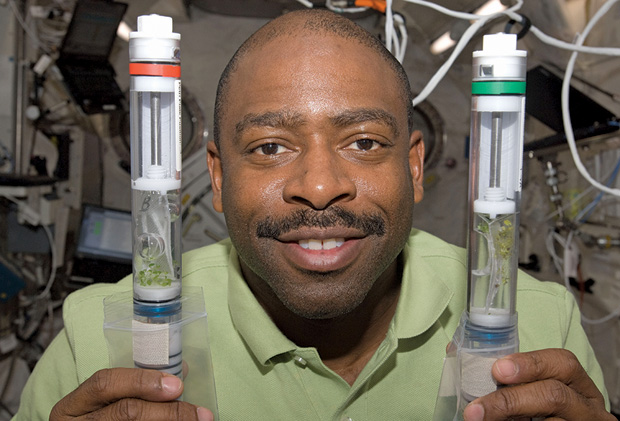
These changes enable myriad research initiatives, from improved cell culturing techniques that better mimic in vivo conditions to measuring decreases in bone mineral density (BMD) that serve as an accelerated model of osteoporotic bone loss. Such studies are often twofold in their goals; for example, in the United States, NASA investigates the deleterious health effects to develop countermeasures that enable astronauts to better endure long-term spaceflight, and the Center for the Advancement of Science in Space (CASIS) evaluates such effects as models of related conditions on Earth. The rest of this article focuses on research toward this latter goal. The ISS is an extraordinary research platform for biomedical studies for several reasons:
- Organisms exhibit phenotypes similar to those for disease and aging on Earth.
- Many of these phenotypes can serve as accelerated models of their analogous terrestrial conditions. Moreover, the physiological changes often occur over a known period, in a characteristic fashion, and in a controlled, stable environment.
- For astronaut observations/testing, the phenotypes manifest in individuals who would otherwise be very healthy.
Bone Loss
Skeletal remodeling is perhaps the best-studied effect of spaceflight. The removal of “loading” in the absence of gravity causes BMD to decrease—this is perhaps also influenced by spaceflight factors such as low light and increased carbon dioxide. This bone loss appears to result from both increased resorption in load-bearing regions of the skeleton and inhibition of bone formation, akin to osteoporosis on Earth. Moreover, BMD decreases more rapidly in space (at approximately 1–2% per month, with an even greater decrease in bone strength) than in analogous diseases on Earth. Accelerated BMD loss occurs in animal models as well: microgravity-induced bone loss in rodents occurs twice as quickly as in hind-limb immobilization models. Exploiting the accelerated nature of this disease model in space may advance studies regarding the progression of bone loss and guide development of next-generation anabolic (bone building) therapeutics.
In one of these studies, the drug company Amgen tested osteoprotegerin in mice onboard the U.S. Space Shuttle, demonstrating the effectiveness of the drug in preventing bone loss. Osteoprotegerin studies led to the development of denosumab, a monoclonal antibody now used on Earth to prevent fractures in postmenopausal women [the U.S. Food and Drug Administration (FDA) approved in 2010 under trade name Prolia] and to prevent skeletal events in patients with bone metastases from solid tumors (the FDA approved in 2010 under trade name Xgeva). Another osteoporosis drug tested in space, AMG 785 (sclerostin antibody), is in phase III clinical trials. The development of a new rodent habitat for the ISS and an accompanying bone densitometer (for measuring BMD in orbit) will enable future studies like these. Because osteoporosis affects more than 200 million people worldwide, a better understanding of this disease and improved methods of intervention to prevent fractures and promote healing are of global interest.
Muscle Atrophy
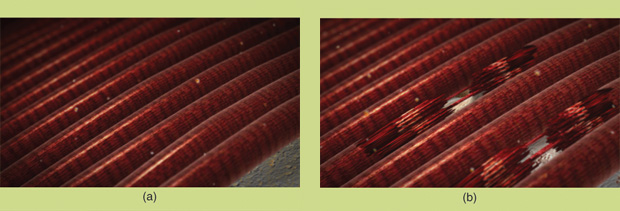
Similarly, spaceflight causes skeletal muscle to lose both mass and strength; for a mission of three to six months, approximately 30% of muscle mass is lost, along with up to 50% of muscle strength (although, again, the effect varies markedly across individuals, and 2–3 hours of daily exercise mitigates this problem in astronauts). Muscle unloading in microgravity induces biochemical and structural changes, including reducing the size (though not number) of muscle fibers. The mechanism appears similar (though again accelerated compared with terrestrial conditions) to that observed in disuse and age-driven muscle atrophy (sarcopenia) on Earth, which affects millions of people every year. A scarcity of approved drugs to treat such conditions calls for new approaches to evaluate and treat muscle atrophy. Previous experiments in this area include an Amgen study that tested a myostatin inhibitor to mitigate disuse muscle loss (and showed positive results) in mice during a later shuttle mission. Other preclinical therapeutic research in space by Amgen also focused on therapeutic development for muscular dystrophy, physical wasting from cancer, and sarcopenia.
Space-induced muscle atrophy may offer additional advantages over terrestrial rodent models that use hind-limb suspension or denervation because it appears to trigger more molecular mechanisms (potentially unveiling new targets) with substantially less circulatory impact. Limited knowledge regarding underlying mechanisms of muscle atrophy on Earth (and the relative importance of the few identified mechanisms) is the major barrier to developing drugs for associated diseases, so ISS may serve as a more clinically relevant platform for drug discovery in this field. After the delivery of the new ISS Rodent Habitat, a CASIS-sponsored investigation will explore the molecular basis of spaceflight-induced muscle atrophy in transgenic mice by evaluating its effects on muscle mass, fiber size and type, and associated protein/gene expression changes. Clarifying some of these mechanisms will allow for further comparison with terrestrial disease, helping determine whether spaceflight effects better mimic disease progression than existing terrestrial models.
Moreover, since bone and muscle loss occur simultaneously, an opportunity exists to study not only individual conditions but also synergistic interactions between phenomena. This is also true of interactions with other phenotypic responses to spaceflight, including cardiovascular and neurological effects, such as microgravity-induced fluid shifts within the body, sensorimotor/balance issues, cardiac atrophy, chronically elevated cerebrospinal fluid pressure [also known as intracranial pressure (ICP)], and new visual–neural connections.
Fluid Shifts
Microgravity causes astronauts’ bodily fluids to shift from the lower to upper extremities. This fluid shift can cause health problems such as increased ICP, cognitive issues, and sensory problems such as impaired smell, taste, and vision. The ophthalmic changes in particular are clinically significant and have affected approximately 60% of astronauts on long-duration missions (sometimes permanently changing visual acuity).
Although fluid shifts also occur on Earth (to a lesser extent) in bedridden patients, and space-based assessments may thus guide treatment of ailments associated with bed rest, these health effects are also useful in modeling other terrestrial conditions. For example, changes in visual acuity may mimic age-related macular degeneration and disease-associated vision impairment. Along these lines, an upcoming CASIS-sponsored project will examine spaceflight-induced ICP increases and associated changes in retina and optic nerve morphology to identify early indicators to help monitor, diagnose, and catch such vision impairment in patients with type II diabetes and other diseases. The greatest benefit of the ISS for this type of marker identification study is that increased ICP occurs predictably in astronauts exposed to microgravity—providing an earlier-stage model for this condition than is typically available in terrestrial studies.
The eye abnormalities that occur in affected astronauts are also similar to those observed in idiopathic intracranial hypertension (the general term for neurological disorders in which ICP is too high), so spaceflight experiments in this area may yield clinically relevant results for patients with such conditions. Furthermore, recent findings suggest that, in addition to fluid shifts increasing pressure around the optic nerve, polymorphisms in the enzymes of an important metabolic pathway (the folate- and vitamin B12–dependent 1-carbon transfer pathway) play a role in whether astronauts experience vision impairment. This finding is consistent with evidence from terrestrial studies that implicate this pathway in migraine headaches and strokes on Earth, which often are related to increased ICP. Consequently, the space-study results could advance understanding and treatment of ICP-related conditions on Earth and guide research into retinal vascular and optic nerve disorders.
Immunological Effects
Immune dysregulation in astronauts has been noted since the 1960s, and researchers have extensively studied how spaceflight affects the immune system, although the mechanism of immunosuppression remains largely unknown. Many changes to the immune system occur in microgravity, including inhibited cell-mediated immunity, reactivation of latent viruses, and altered or decreased production/activation of almost all types of immune cells and proteins. These phenotypes probably result from spaceflight’s many psychological and physiological stressors: isolation, confinement, disrupted circadian rhythm, sleep deprivation, hormone fluctuations, and weightlessness itself. Additional influences from exposure to ionizing radiation (approximately 20 times greater than terrestrial exposure) may also be present.
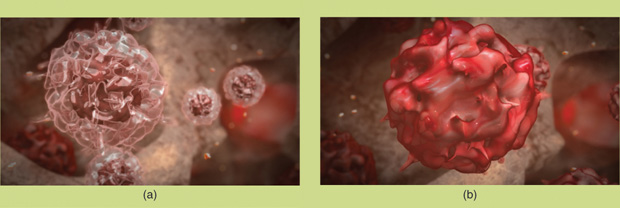
One preliminary mechanism that influences immunosuppression includes microgravity-induced cytoskeletal reorganization and suppression of signaling pathways involved in early T-cell activation. An ongoing investigation onboard the ISS clarifies the mechanisms involved in this aspect of immune dysfunction since it is akin to age-related immunosuppression in adults on Earth. This decreased T-cell function may also account for the frequent incidence of viral reactivation among astronauts during spaceflight, which manifests primarily through increased shedding of the Epstein–Barr virus in astronaut saliva and increased concentrations of antibodies to the associated viral proteins. Studies on this and the reactivation of other latent herpes viruses are also ongoing and may help identify more early indicators of viral activation.
Cell Culture
On a related note, various bacterial pathogens may become more virulent in microgravity—apparently the result of not only immunosuppression of host/target cells but also changes in microbial physiology. Studies evaluating the pathogenicity, gene expression, and antibiotic resistance of microbes thus hold promise to accelerate disease treatment and vaccine development.
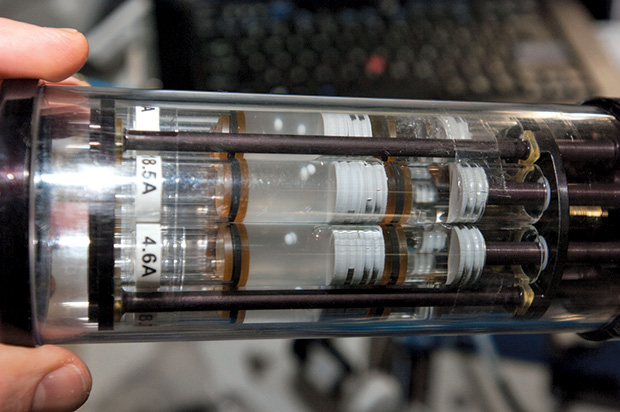
In human and murine cell cultures, the improved aggregation of cells into a 3-D tissuelike architecture allows for studies that better mimic in vivo conditions, increasing the translational relevance of results. This phenomenon results from the physical properties of the space environment (mainly the functional absence of buoyancy-driven convention, fluid shear, and sedimentation) and significantly influences biological function. Moreover, the global gene expression changes seen in microgravity cultures result in phenotypic consequences including, in some cases, improved differentiation, proliferation, viability, and various other cell characteristics and functions. For example, past experiments using stem cells demonstrate that, depending on cell type, microgravity can induce a range of altered behaviors, from accelerated differentiation to maintenance of pluripotent marker expression to various lineage-restriction phenotypes.
The primary advantage of performing space-based experiments—versus cell culture studies in “simulated” or “modeled” microgravity devices on the ground—is the drastic reduction in shearing forces, which are still present in most ground-based microgravity experimental systems. Space-based studies have examined tumor growth, wound healing, infection, tissue engineering, drug response, cell communication, and many other cell culture phenomena, thus enabling both increased fundamental biomedical knowledge and improved drug design, development, and screening. Moreover, new advances in systems biology approaches and technologies offer complementary methods of accelerating data acquisition and analysis, and current -omics projects onboard the ISS promise to yield integrated and comprehensive results from not only cell culture studies but also in regard to many of the space-induced physiological effects discussed in this article.
Future of ISS Biomedical Research
Physiologically, acclimating astronauts to microgravity is a complex process; all organ systems are affected to some extent. The ability to study humans and model organisms (the ISS supports research using rodents, flies, worms, zebrafish, yeast, plants, and many other models) in such a controlled, longterm altered state offers an opportunity not often available for many health conditions, especially for human studies. The fact that many of the conditions actually serve not only as models of disease on Earth but also as accelerated models with characteristic phenotypic progression makes the ISS a powerful experimental system.
Spaceflight research holds great potential to continue yielding clinically relevant results that are faster and often more robust than those from terrestrial studies. Because R&D for a pharmaceutical, from preclinical discovery to market, takes approximately 12–15 years (roughly half of which is in the bench-research phase), any acceleration of scientific discovery for the treatment of diseases (such as via modeling in microgravity) might get effective drugs on the market faster. The ISS offers a unique environment to test hypotheses and may allow insight into questions that have eluded traditional laboratory experimentation. What better place than in space itself to seek such knowledge?
This is an exciting time in science: The landscape of research endeavors is changing, and there is an urgent and unique opportunity for private participation and investment in the potential of the ISS. We have entered a new era of scientific discovery, and the newest platform for better understanding life on Earth lies 240 mi above its surface. The ISS helps us reach to the stars for tangible advancements in quality of life and health on Earth.
References
- C. A. Evans, J. A. Robinson, J. Tate-Brown, et al. (2009). International space station science research accomplishments during the assembly years: An analysis of results from 2000–2008, NASA Johnson Space Center, Houston. [Online].
- T. L. Thumm and J. A. Robinson. (2010). The era of international space station utilization: Perspectives on strategy from international research leaders. NASA. [Online].
- National Research Council. (2003). Assessment of directions in microgravity and physical sciences research at NASA, Washington, DC: The National Academies Press. [Online].
- National Research Council. (2011). Recapturing a future for space exploration: Life and physical sciences research for a new era. Washington, DC: The National Academies Press. [Online].
- D. Williams, A. Kuipers, C. Mukai, and R. Thirsk, “Acclimation during space flight: Effects on human physiology,” CMAJ, vol. 180, no. 13, pp. 1317–1323, June 2009.



